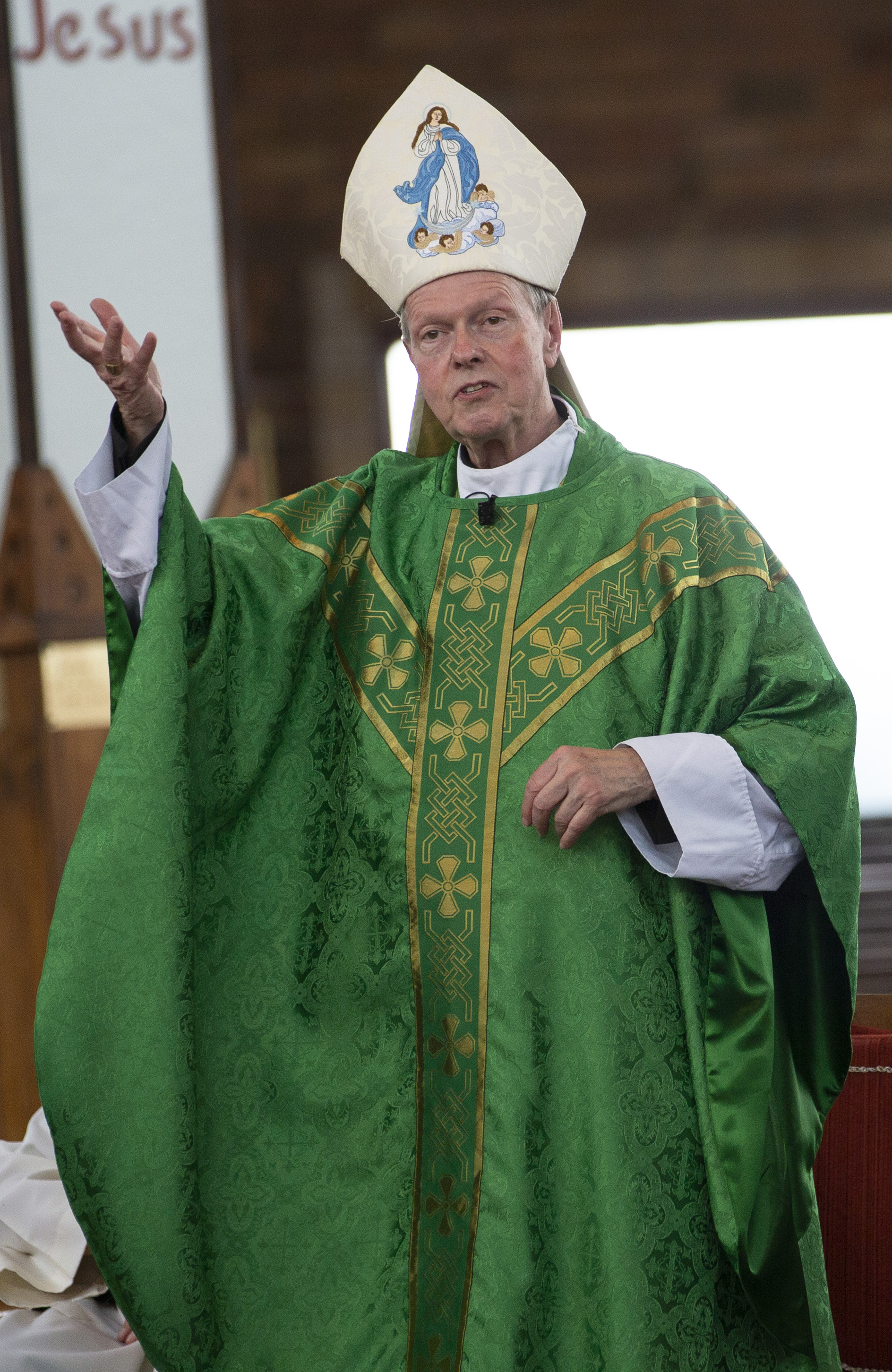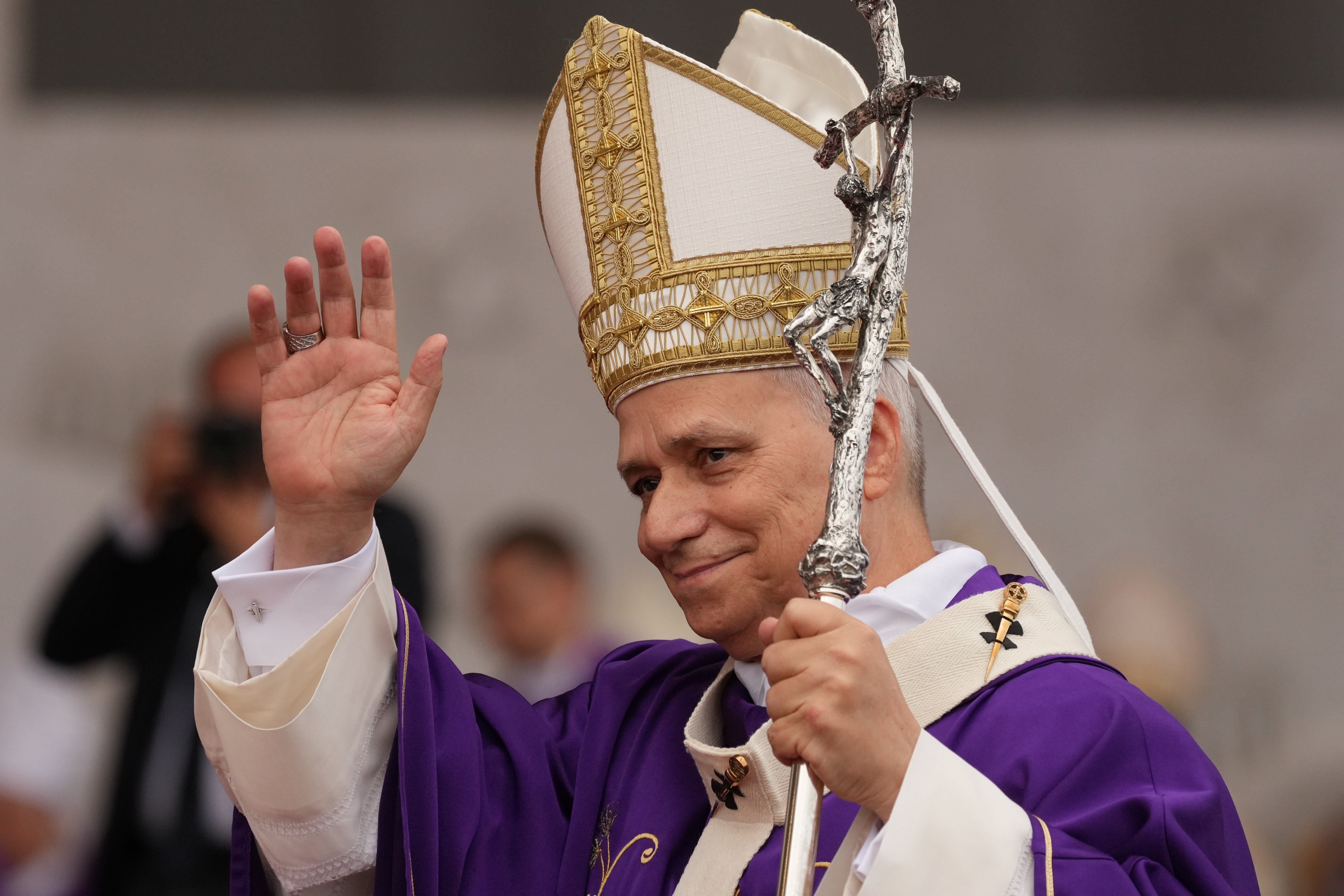August 14, 2024 at 9:24 a.m.
In the Gospel this Sunday (John 6:51-58), the crowd understands well the realism and import of Jesus’ words about “eating his flesh and drinking his blood.” So much so, that they cry out “how can this man give us his flesh to eat?” Our Lord’s words would have shocked the crowd, especially given the religious prohibition of consuming any blood. To drive this point home, Jesus uses words that refer to eating seven times in Chapter 6 of John’s Gospel. No, there is no mere symbolism or a metaphor here (as some commentators maintain); but a realism. If the crowd has misunderstood the realism of Jesus’ words, he would have corrected them (as he had done on other occasions). Indeed, we will hear in next week’s Gospel that many could not accept Jesus’ words and so they leave him.
In this fourth reflection about the Mass and the Eucharist, we can therefore focus on the Eucharist as the “real presence” of Jesus. Of course, as the Catechism (n. 1373) reminds us, Jesus is present to us in so many ways: in the Sacred Scriptures, in all of the sacraments, in our prayers, in the poor and the sick and in each other. However, in the Eucharist this presence of Jesus is special and unique. Not surprisingly, there have been many questions and controversies about this unique and special presence; not least about whom or what we receive in the Eucharist and how can this really happen. So, let us explore some of those questions together.
Our Catholic belief (and one shared by a number of other Christian traditions) is that when Jesus said “this is my body … this is my blood” at the Last Supper, he really meant what he said. He did not say, “this is a likeness of my body,” or “this is just a symbol of my blood.” No, he said “this IS my body … this IS my blood.” In the Gospel this weekend we also have this sense of a real presence, for example, when Jesus says “the bread that I will give for the life of the world is my flesh” (John 6:51). We can summarize our belief by saying that in the Eucharist, we receive the risen Lord in a sacramental and a “substantial” way under the form of the consecrated or converted bread and wine. This is a very dense summary and perhaps we can take a few moments in unpacking what we mean by all this.
Writing some 1,700 years ago about the Eucharist, St. Ambrose of Milan said this about the bread that we consecrate at Mass: “be convinced that this is not what nature has formed, but what the blessing has consecrated … for by the blessing, nature itself is changed.” Later on, a more technical word was used to describe what happens to the bread and wine when they are blessed and consecrated and how they become the true Body and Blood of Jesus: the term, of course, is transubstantiation. This is not exactly an everyday word; so what does it mean?
Rather like the word “consubstantial” that we use in the Creed, transubstantiation is indeed a technical word and is actually several words put together in one: trans-substan-tiation!
“Trans,” like our words transplant (trans-plant) or transportation (trans-portation), implies a movement or dynamic from one place or reality to another and “substantiation” refers to the substance of a thing; that is what it really is. Therefore, this difficult word transubstantiation really means that the reality of the bread and wine (what they really are) are moved, or changed, or converted into the Body and Blood of Christ; even though the appearances or signs of the bread and wine appears to remain before our eyes.
Pope Emeritus Benedict XVI in a homily to children who were making their First Holy Communion was asked a question that only a 7- or 8-year old might ask: “How do we know that Jesus is there when all we see is bread and wine?” The pope replied: think of things that are central to you like electricity, or music, or thinking, or loving. We cannot see them as such, yet we know that they are there and we can also see their effects on us and others. The same is true analogously with the real presence of Jesus in the Eucharist.
Once again, St. Thomas Aquinas puts this beautifully in his Eucharistic hymn, “Adoro te devote:”
Seeing, touching, tasting are in thee deceived;
How says trusty hearing?
That shall be believed;
What God’s Son has told me, take for truth I do;
Truth himself speaks truly, or there’s nothing true.
Let us return to our question about who is actually present in the Eucharist? Do we really eat flesh and drink blood? Are we like cannibals then (as many thought Christians were in the early days of the Church)? Let us go back to the words of Jesus mentioned above: “this is my body, this is my blood,” or as Jesus says in the Gospel reading we have just heard: “unless you eat the flesh of the Son of Man and drink his blood you have no life in you.” (John 6:52). We have then the truth of Jesus’ words and we accept them in faith. If we find this hard to grasp, we can take comfort in the fact that even the crowds were puzzled when Jesus said these words. Remember how they asked “how can this man give us his flesh to eat?” As the Gospel tells us, they end up quarreling among themselves.
What did Jesus mean and who or what do we receive in Holy Communion? Well, we are not cannibals of course (eating actual meat and blood as we understand it in everyday life); but we must not reduce the presence of the Lord to just some sort of vague metaphorical or spiritual presence either, nor reduce the power and meaning of Jesus’ words mentioned above. Christ is really present in the Eucharist and we truly receive him in the form of bread and wine: “real food and real drink” to use Jesus’ words. In the Eucharist we have the whole risen Christ (body, blood, soul and divinity, to use the traditional definition); he is truly, really and substantially present, but the key is that this risen Christ is received in a sacramental way.
Incidentally, because of this presence of the whole of Christ in the Eucharist in this sacramental way, we do not therefore receive more or less of our Lord depending on the size of the host! This is also why Christ can be present to us and yet present in many other churches and places, as well as in heaven: all at the same time. Finally, this is why we receive the whole of our Lord whether we consume either the consecrated bread or wine. We usually receive both to give a fuller sign of who we receive and what we are celebrating, but the Lord is fully and wholly present in either.
This presence of Christ is also permanent. Why and how so? Well, for one thing, God does not take back His words or promises. Once the bread and wine are consecrated and the words of Jesus are said (“this is my body … this is my blood”), then that same Word of God abides and is permanent. This is why we reserve the sacrament in a special container called a tabernacle. It is also why we have adoration of the Eucharist: it is a great form of prayer and a way of celebrating and prolonging the encounter with the Lord that we have experienced during the Mass.
The realism of Jesus’ words in our Gospel this Sunday challenges us in many ways. The Lord’s words call us to explore and renew our faith in the real presence of the risen Jesus Christ in the Eucharist. If our Lord feeds us with himself, then we cannot take the Eucharist for granted, nor receive the Eucharist unworthily (cf. 1 Corinthians 11:27). We remember that unlike ordinary food (that we eat and that food becomes, as it were, part of us), when we eat the Eucharist, we are to become like the one we have received. Finally, the Lord asks us to take his real presence out from the Mass, to all those we will encounter in the day ahead.
Father Barratt, STL, PhD, EV, ChM, is the director of the Office of Prayer and Worship, episcopal vicar for the Hudson Valley Vicariate, a member of the Presbyteral Council & College of Consultors and pastor at Holy Trinity Parish in Hudson-Germantown — all in the Diocese of Albany — and adjunct professor at Siena College and St. Bernard’s Postgraduate School of Theology and Ministry in Albany.
- Federal appeals court blocks injunction against California’s ‘student gender secrecy laws’
- Church, government officials in Spain sign reparations agreement for abuse victims
- Hundreds bid ‘adieu’ to Brigitte Bardot at funeral in Saint-Tropez
- The National Eucharistic Pilgrimage is back in 2026 — with a patriotic twist
- Pope to cardinals: You are not experts promoting agendas, but a community of faith
- Archdiocese of St. Louis files to dismiss abuse charges, citing state law, case precedent
- Why do we baptize infants, and why was Jesus baptized?
- Full text: Pope Leo XIV’s homily at morning Mass of the Extraordinary Consistory, Jan. 8, 2026
- Archbishop Hebda calls for prayers after woman shot dead by ICE officer in Minneapolis
- ‘I am here to listen’ Pope Leo tells cardinals at start of consistory








Comments:
You must login to comment.